Caherbrack House
Houses within 15km of this house
Displaying 85 houses.
Houses within 15km of Caherbrack House
Displaying 85 houses.
| House name | Description | |
|---|---|---|
| Knocklofty | A mainly 18th century house, cited by Wilson as the seat of John Hely Hutchinson in 1786. In 1840 the Ordnance Survey Name Books describe it as "spacious and handsome, having a fine plain front". It was valued at £70 in the mid 19th century, the seat of the Earls of Donoughmore until 1983, though Walford mentions Samuel H. Goold-Adams of Knocklofty in 1885. The Irish Tourist Association surveyor writes that Knocklofty was De Valera's headquarters for a time during the Civil War. Until recently it served as a hotel but in 2013 it was offered for sale. |

|
| Kilgrogy House | A Clutterbuck home, occupied by Thomas Clutterbuck in 1814. The Ordnance Survey Name Books refer to it as the residence of Samuel Clutterbuck in 1839 and mention that it was in bad repair. Lewis refers to it as the seat of L. Clutterbuck in 1837 and Samuel Clutterbuck was the occupier in the early 1850s. He held the property from Viscount Lismore. The buildings were valued at £14. A building is still located at this site. | |
| Marlhill | This house was the residence of Robert Prendergast in 1814. In 1840 the Ordnance Survey Name Books also record it as his residence under the slightly variant name of Marlow Hill. James Prendergast held the house valued at £12.15 shillings from the Reverend John Bagnell with 182 acres in the mid 19th century [see Bagnell entry in ''Burkes Irish Family Records'']. Home of the Rice family from the 1860s. A building still stands at this site. | |
| Monroe House | Charles Browne was occupying this house in the early 1850s. He held it from the Earl of Glengall and the buildings were valued at £10. A house and farm are still extant at the site. | |
| Corrabella | In 1840 the Ordnance Survey Name Books describe this house as "a very good building in bad repair, the residence of Miss Ann Mulcahy". It was leased to William Mulcahy by the Glengall estate and occupied by him in the mid 19th century when it was valued at £18+. A lithograph of this building is included in the sale rental of November 1853. The Mulcahys were still resident in the 1950s. This three storey house still functions as a residence. |
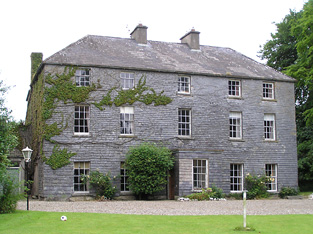
|
| Greenmount (Molough) | Originally the home of a branch of the Greene family of Kilmanahan. Occupied by Robert Prendergast in 1814. In 1841 the Ordnance Survey Name Books refer to it as the residence of Richard Butler Hamilton Low. It was leased by Southwell Mulcahy at the time of Griffith's Valuation, when the house was valued at £24 and held from the Reverend William Pennefather. Marked on the first Ordnance Survey map as Greenmount, this house is now known as Kenilworth House. |
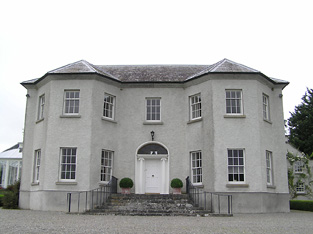
|
| Burgesland House | In 1841 the Ordnance Survey Name Books refer to Burgesland House as "a gentleman's place, the residence of Thomas Mulcahy". The house was valued at £16+ in the mid 19th century. It was occupied by Thomas Mulcahy and held from Edward Pennefather. Some ruined buildings are extant at the site. | |
| Lacken | In 1840 the Ordnance Survey Name Books noted Lacken as the residence of "Pendergrass", a house in very good repair. John Mulcahy occupied the house valued at £15+ at Lacken in the mid 19th century. He held the property from William Ryan. This house is no longer lived in. |

|
| Pastor Ville | By the early 1850s the Reverend Edward Larkin was resident at Pastor Ville, valued at £16+ and held from the Earl of Clonmel. The house is labelled Pastorville House on the 1st edition Ordnance Survey map but as Boolahallagh House on the later 25-inch edition of the 1890s. It is now in ruins. | |
| Neddans | In 1840 the Ordnance Survey Name Books note "Neddins" as the residence of Mr. Mulcahy, "a very neat house in excellent repair". At the time of Griffith's Valuation Francis Mulcahy occupied a house at Neddans valued at £21 and held from the Earl of Glengall. A farming enterprise is still located at this site. | |
| Coole | A house with a gatelodge marked on the first Ordnance Survey map and located just north of Knocklofty. Occupied by Thomas Morrissey in the mid 19th century, held from the Earl of Donoughmore and valued at £16+. A building is still extant at this location. | |
| Marlfield | Built by Colonel John Bagwell MP in the late 18th century in the Palladian style. It was the seat of the Bagwell family of Clonmel in the 19th and 20th centuries, held from the Moores of Barne and valued at almost £83 in the early 1850s. The central part of the house was burnt in 1923 and rebuilt in 1925 and is now in use as an apartment complex. |

|
| New Abbey | In 1786 Wilson refers to New-Abbey as the seat of Moore Cootee. He notes that the house was close to "the great flour mills built by the late Stephen Moore". New-Abbey was occupied by Henry Moore in the mid 19th century and held from Stephen Moore, the buildings were valued at £11.16 shillings. | |
| Salisbury | Stephen Moore is recorded as resident here in 1814 and T. Sadlier in 1837. The christian name of the mother of Stephen Moore was Salisbury. By the time of Griffith's Valuation John Bagwell held the house in fee. It was valued at £18+. Percy Gough of Salisbury, Clonmel, owned 724 acres in King's County in the 1870s. Slater refers to "Inislonagh House" as the seat of Lt-Gen. Sir Charles J. Gough in 1894. Bence Jones writes that this house was leased to J.W. Cleeve in the early 20th century and from the late 1920s to Sir David O'Brien 6th Baronet. |

|
| Bird Hill | A house located on the outskirts of Clonmel town was the residence of a member of the Taylor family in 1837. At the time of Griffith's Valuation this house valued at £10.12 shillings was occupied by Margaret Cantwell and held from Stephen Moore with 7 acres of land. This house is still in use as a residence. | |
| Tourin and Tourin Castle | Tourin House was owned by Sir Richard Musgrave at the time of Griffith's Valuation, when it was valued at £41 10s. An earlier house, attached to Tourin Castle, is located nearby [X095965]. In 1850 it was valued at £49. In 1837, Lewis refers to this earlier Tourin House as the seat of Sir R. Musgrave, "composed partly of an ancient castle, commanding extensive and picturesque views".In 1906 the larger house had a valuation of £64 while the other buildings were valued at almost £10. The Musgrave estate still owned the properties. The ITA survey of the 1940s noted "Toureen" as the resident of Captain Jamison, formerly the property of the Musgraves. Both houses are still extant and occupied. |
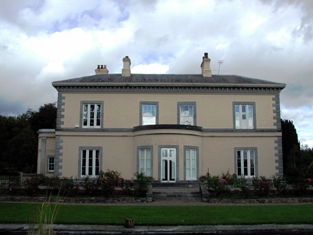
|
| Tourin Castle Farm | This property, valued at £3 in 1851, represents the original Musgrave property and attached to the ruins of Tourin fortified house. Smith refers to a castle at Tourin, owned by John Reeves Nettles and formerly in the hands of the Roches. |
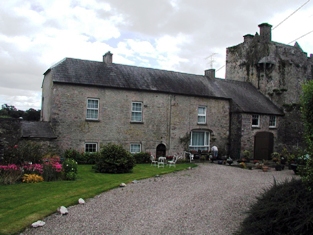
|
| Ballygalane House | Nicholas P. O'Gorman was leasing an unnamed property valued at £14 from the Devonshire estate in 1851. On the later 25-inch Ordnance Survey Map it is labelled Ballygalane House. Brady notes that Smith had referred to it being owned by the Crotty family. An extant house still exists at the site. | |
| Cappoquin House | in 1851 Cappoquin House was held in fee by Sir Richard Keane and valued at £56 15s.IN 1786, Wilson refers to the house at Cappoquin as Bellmont, the seat of John Kane. The 1855 sale notice describes it as a "handsome, modern and extensive building". In 1906 it was the residence of Lady Adelaide Keane and valued at over £57. Bence-Jones notes that it was burnt in 1923 but later rebuilt in the same style. The ITA survey in the early 1940s noted that the library and art collection were destroyed in the 1923 fire. It is still extant and occupied by the Keane family. The house and gardens are open to the public at certain times. |

|
| Glenshelane Cottage | Leased by Sir Richard Keane to John Keane in 1851 when it was valued at £14. The 1855 sale notice describes it as "a handsome cottage". Later in the possession of Justin Deane Freeman and leased to Thomas Haly. Offerd for sale in the Landed Estates Court in February 1864, when the owner was Charles St. John Herbert and the petitioner, Maria Deane Freeman. The house is still extant and occupied. |

|
| Ardfinnan Castle | A building that has been added too and altered since the 15th century. Occupied by James Prendergast at the the time of Griffith's Valuation, held from the Ecclesiastical Commissioners and valued at £13. In 1894 Slater notes it as a residence of Mrs. Prendergast. Still in use as a residence. |

|
| Bellevue (Lismore) | Paul Shewcraft was leasing this property from the Devonshire estate in 1851 when it was valued at £19 10s. | |
| Salterbridge House | The current Salterbridge House was mainly constructed in 1849 but incoroporated an eighteenth century house. Wilson, writing in 1786, refers to "Salta Bridge" as the seat of Richard Musgrave, "remarkable for its extensive orchards". At the time of Griffith's Valuation it was the residence of Richard Chearnley and valued at £68. In 1906 Salterbridge was owned by Henry P Chearnley and valued at over £70. The house remained in the family until the 1950s and subsequently became part of the Wingfield estate. It is still extant and open to the public at certain times. An associated gate-lodge is available for self-catering accommodation through the Irish Landmark Trust. See www.irishlandmark.com. |

|
| Drumroe House (Waterford) | In 1851 this property was leased by Sir W.J. Homan from the estate of Mansergh St. George, when it was valued at £45. William Jackson Homan was a member of the Homan family of county Westmeath and married to Lady Charlotte Stuart. Local sources suggest he acted as a steward on the Dromana estate. The house is now a ruin. | |
| Kilbree House | At the time of Griffith's Valuation, Phillip Chearnley was leasing this property from Matthew Whelan when it was valued at £28. There is still an extant house at this site. Another property in this townland is referred to in ITA Survey of the 1940s as Kilbree Castle. This building, described as "in ruins" on the 25-inch Ordnance Sirvey map of the 1890s, had been reconstructed and was occupied at the time of the survey by Gerald Stuart. In 1786 Wilson mentions that Kilbree had "formerly belonged to the Knights Templars". Buildings are still extant at the site. | |
| Glenabbey House | Leased from Richard Carey by Garrett R. Carey at the time of Griffith's Valuation, when it was valued at almost £8. | |
| Kilnamack | In 1849, the representatives of John Greene were leasing this property to Edward Butler when it was valued at £12 11s. Both Wilson and Taylor and Skinner had also recorded it as a residence of the Greene family in the 1780s. It is still extant and in 2013 was offered for sale. |
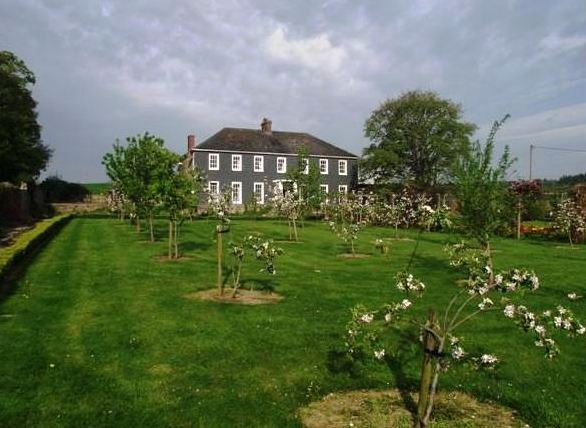
|
| Tivoli (Cappoquin) | Tivoli was being leased by Henry Dennehy from the Keane estate at the time of Griffith's Valuation, when it was valued at £17. It was included in the sale of Dennehy's estate in the Encumbered Estates Court in 1857 when it was in the owner's possession. The house is still extant and occupied. |

|
| Ardpaddin | Mary Mulcahy was leasing this property from the Earl of Stradbroke's estate in 1850, when it was valued at £10. A substantial farm is still extant at the site. | |
| Nirevale House & Mill | At the time of Griffith's Valuation, Abraham Coates was leasing this property from the Stradbrooke estate when the house and mill complex were valued at £50. Contemporary newspaper reports suggest Coates was the agent for the Stradbroke estate. In 1906 the property was part of Lord Ashtown's estate and valued at almost £24. The mill building is still extant and in use. |

|
| Ballymakee House | Edward Mulcahy was leasing this property from the Stradbroke estate at the time of Griffith's Valuation, when it was valued at £26. A substantial house overlooking the river Suir, it is still extant. | |
| Whitesfort | At the time of Griffith's Valuation John Norris was leasing this property from the Stradbroke estate when it was valued at £11. Referring to the 1770s Sadleir notes "John White, of Whitefort" who was married to a daughter of Ambrose Lane. It is not named on the 1st edition Ordnance survey map though buildings and a walled garden are visible. The ruins of some buildings remain. | |
| Suir Mount | The representatives of James Fitzpatrick were leasing this property to John Egan in 1850 when it was valued at £13 11s. The house was included in the sale of the estate in May 1850 when it was described as " a good substantial dwelling house". | |
| Ballydonagh House | Described as a steward's house at the time of Griffith's Valuation, when it was held in fee by Maria Fitzpatrick and valued at £13 9s. Labelled Ballydonagh House on the 25-inch edition of the Ordnance Survey in the 1890s. | |
| Glasha | Phillip Lowe was leasing this property from Viscount Midleton's estate in 1850 when it was valued at almost £12. In 1783 it was noted by Taylor and Skinner as a residence of the Power family. | |
| Kilmanahan Castle | Robert Sparrow was leasing this property from the Greene estate in 1850 when it was valued at over £72. It was offered for sale as part of William Greene's estate in July and December 1852. The sale notice includes a lithograph of the castle. It was bought by Alexander Glasgow who sold it on to the Earl of Donoughmore in 1855. Earlier, in 1786, Wilson notes it as the seat of Mr. Greene. In 1837, Lewis refers to it as the seat of Lt. Col. Nuttall Greene. Hussey records Thomas Wright Watson of Kilmanahan Castle in the mid 1870s. In 1906 it was part of th Donoughmore estate and valued at £45. It is still extant. |
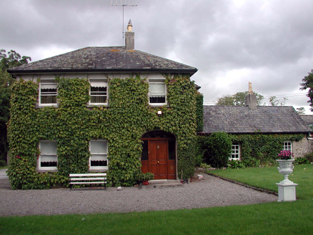
|
| Spring Field (Clonmel) | Francis Prittie was leasing this property from the representatives of E. Labarte in 1850. It was then valued at £32 10s. It is still extant and occupied. |
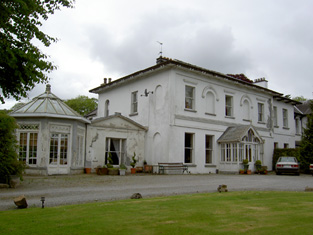
|
| Merlin | In 1850 Abraham Grubb held this property in fee when it was valued at £54. Merlin is still extant and occupied. |

|
| Rose Ville (Clonmel) | At the time of Griffith's Valuation, Mrs. Anne Murray was leasing this property from Abraham Grubb when it ws valued at £33. The National Inventory of Architectural Heritage states that it was designed by Tinsley for the Murray family. Rose Ville has been in use as the Loreto convent since 1881. |

|
| Ashbourne (Clonmel) | In 1850 William Davis was leasing this property from Abraham Grubb when it was valued at almost £36. The National Inventory of Architectural Heritage indicates it was designed by William Tinsley for the Davis family. It is still extant and occupied. |
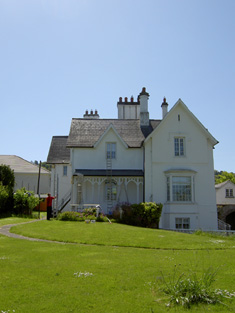
|
| Fairyhill House (Clonmel) | Leased by Thomas Hughes to David Franks at the time of Griffith's Valuation in 1850 when it was valued at almost £27. Fairy Hill is still extand and occupied. |

|
| Spa Ville | Cuffe Wall was leasing this property to Mrs. Susan Vowel at the time of Griffith's Valuation, when it was valued at £15 10s. It is labelled Spaville on both the 1st edition and later 25-inch edition Ordnance Survey maps. A house still exists at the site. | |
| Spa A | Thomas Dee was leasing this property from the Bagwell estate at the time of Griffith's Valuation, when it was valued at £14. | |
| Glenbrook | At the time of Griffith's Valuation, William Smyth was leasing a house and mill complex from the Bagwell estate, then valued at almost £27. By the end of the nineteenth century the mill is no longer functioning and the house has become known as Glenbrook. | |
| Raheen House (Clonmel) | Held in fee by Mrs. Elizabeth Greer at the time of Griffith's Valuation, when it was valued at over £55. It was offered for sale in September 1878 on behalf of William Greer, described as a lunatic, by his guardians. | |
| Affane House | Held in fee by Samuel Browning Power in 1851 when it was valued at £32. Lewis refers to it as the seat of S. Power in 1837. It was the property of Samuel J. Power in 1906 and still valued at £32. Brady notes that the house incorporates material from the late seventeenth century house owned by the Greatrakes famly. In the 1780s Taylor and Skinner refer to it as a residence of the Browning family. It is now almost a ruin. |

|
| Belleville Park (Affane) | George B. Power held Belleville Park in fee at the time of Griffith's Valuation, when it was valued at £39. Lewis noted it as the seat of S. Poer in 1837. Wilson, writing in 1786, mentions "Bettytville" as the seat of Pierce Power. The ITA survey states that it was afterwards occupied by members of the Tanner and Wyse families. At the time of the survey, in 1942, it was the home of Richard Keane, It is still extant and occupied. |
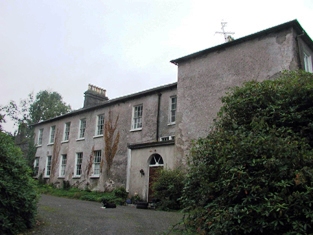
|
| Richmond House (Affane) | Maj John H. Alcock was leasing this property from Henry Dennehy at the time of Griffith's Valuation when it was valued at £29. Lewis also noted it as his seat in 1837. The National Inventory of Architectural Heritage indicates it was also linked with the Villiers Stuart family. It is still extant and occupied. |

|
| Derriheen House | In 1851 Mrs. Grace Mansfield was occupying this property, which was in the hands of the Court of Chancery at the time. It was valued at £24. It is still extant and occupied. Lewis refers to it in 1837 as the seat of C. Maunsell. |
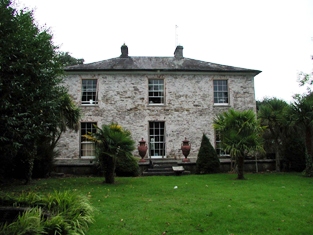
|
| Monyvroe | In 1851 Edmund Power held this property from Lord Decies estate when it was valued at £11 10s. There are still extant buildings at the site. | |
| Mountrivers (Affane) | In 1851, Sir Charles Shaw was leasing this property from the Gumbleton estate when it was valued at £27. The Villiers Stuart Papers in PRONI suggest Shaw was the head agent for that estate from the late 1840s.Lewis refers to it as the seat of Rev. G. Gumbleton in 1837. Mountrivers was demolished in the 1990s. A nearby property [X104975]. valued at £15, was held by Shaw from the Musgrave estate and used as a fever hospital. |

|
| Carrowgarriff | At the time of Griffith's Valuation, Edward Power was leasing this property from the Osborne estate when it was valued at £11 10s. The site is now occupied by farm buildings. | |
| Colligan Lodge | Reverend Craddock was leasing this property from the McGuire estate at the time of Griffith's Valuation, when it was valued at £15 10s. The house is labelled Colligan Lodge in the 25-inch Ordnance Survey map of the 1890s. The famous greyhound "Master McGrath" was born at Colligan Lodge in 1866, when it was the home of James Galwey. In 1906 it is recorded as part of the Earl of Dartry's estate and valued at almost £25. Waterford County Museum researchers note that the building was dismantled in the 1940s. | |
| Ballyduffbeg | James Lynch was leasing this property from the Devonshire estate at the time of Griffith's Valuation, when it was valued at £10. | |
| Lacken Lodge | Leased by Dominick Fallon from the Devonshire estate in 1851 when it was valued at £12 10s. | |
| Ballyduffmore | Eleanor Walsh was leasing this property from the O'Dell estate at the time of Griffith's Valuation. Ballyduffmore is still extant and occupied. |

|
| Curraghamoreen House | Rev. John O'Meara was leasing this property from the Villiers-Stuart estate in 1851 when it was valued at £14. The house is still extant and undergoing renovations. | |
| Coumahon | Col. Palliser was leasing this property to Patrick Stack in 1851 when it was valued at almost £10. A house still exists at the site. | |
| Bewley | Captain Wiliam Chearnley was leasing this property to Geoffrey Norris at the time of Griffiths Valuation when it was valued at over £9. A farm is still extant at the site. | |
| Woodstock House (County Waterford) | John Hackett was leasing this property to Thomas Walsh in 1851 when it was valued at £21. It was included in the sale notice for the Walsh estate in May 1851 where it is noted that "a sum of over £2000 was expended in building the mansion". The house appears to have also been known as Whitechurch House. In 1894 Slater refers to it as the seat of Lt-Col. Charles Hely. The ruin of the original house was still visible until this century but a modern building occupies the site now. | |
| Kilrossanty Mill | In 1851, Mrs. Mary Callaghan was leasing this property, which included a corn mill, from Sir Edward Kennedy's estate when it was valued at £11 10s. The mill building is still extant. |
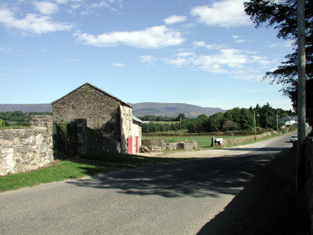
|
| Carrigmoorna House | In 1851 Thomas P. Sherlock held this property from Sir Edward Kennedy's estate when it was valued at £16. On the 25-inch Ordnance Survey map of the 1890s it is named Carrigmoorna House. A modern house appears to occupy the site. |
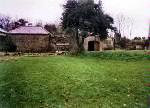
|
| Comeragh House | At the time of Griffith's Valuation, Col. Wray Palliser was leasing this property from Phineas Hunt, when it was valued at £28. It is recorded as the address of John Palliser in the 1870s. Though badly damaged by fire in 1923, Comeragh house was restored and is still extant. The ITA survey of 1942 noted it was in the ownership of Captain Fairholme at that time. It was offered for sale in 2010. |
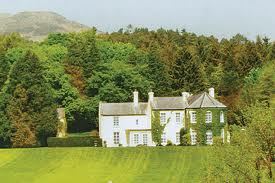
|
| Briska House | Leased by Robert Acheson from Col. Palliser in 1851 when it was valued at £11. On the 25-inch Ordnance Survey map of the 1890s it is named Briska House. A house is still extant at the site. | |
| Glenview {?}/Comeragh-house B | In 1851, Rev. William Ardagh was leasing a property adjacent to Comeragh House from the Palliser estate when it was valued at almost £10. A house and farm buildings are still extant at the site. Walford gives Rev. Ardagh's address as Glenview which may refer to this house. | |
| Mount Kennedy | At the time of Griffith's Valuation, John Power was leasing this property from Margaret Power when it was valued at £13 10s. It is still extant and occupied. |
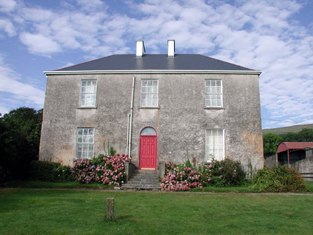
|
| Cutteen House | Phillip Coffey held this property from Edward Gallwey at the time of Griffith's Valuation when it was valued at almost £10. He also held an estate of over 1200 acres there. The 25-inch Ordnance Survey map of the 1890s names the property as Cutteen House. | |
| Comeragh Lodge | Thomas Hunt was leasing this property from Col. Palliser's estate in 1851, when it was valued at £14. It is still extant and occupied. |
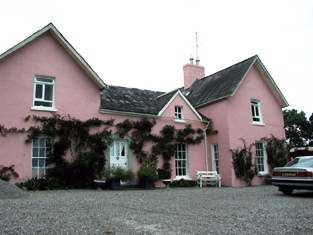
|
| Ballynamuck House | At the time of Griffith's Valuation, Mrs. Eleanor Hearne was leasing this property to Patrick McCarthy when it was valued at £10 10s. In 1814 Leet notes it as the residence of Miss McGrath. Farm buildings now occupy the site. | |
| Mountain Castle | In 1851 James O'Keeffe was leasing this property from the Chearnley estate when it was valued at £17 10s. An 1834 document in the National Library of Ireland suggests it was formerly in the possession of the Barron family The property is still extant. |

|
| Rockfield (Modelligo) | Pierce Hely held this property in fee at the time of Griffith's Valuation, when it was valued at £33 10s. Wilson, writing in 1786, refers to "Rockville" as the seat of Mr. Hely. The house is still extant and occupied. The National Inventory of Architectural Heritage notes its association, not only with the Hely family, but also that of English and Grove-White. |

|
| Scart Cottage | Thomas Hely was leasing this property from Christopher Griffith in 1851, when it was valued at almost £8. A house still exists at this site. | |
| Clonkerdin House | Mrs Catherine Quinlan was leasing this property from Lord Stuart de Decies in 1851 when it was valued at £30. It is still extant and occupied. In 2014 it was offered for sale. |

|
| Whitechurch | In 1851 this property was held in fee by Florence McCarthy when it was valued at £32. Local sources suggest it was once part of the Earl of Huntingdon's estate. The ITA survey noted that it had previously been the property of Dr. Forsythe, and, from the 1920s onwards, owned by the McGrath family. It is still extant and used as self-catering accommodation. |
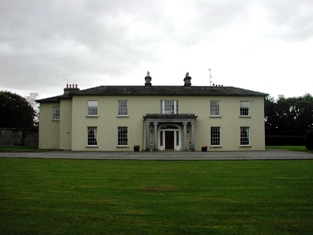
|
| Cappagh House (Old) | Richard Ussher held this property in fee in 1851 when it was valued at £41. This is the original Cappagh House, built by the Ussher family in the late eighteenth century and referred to in 1774 by Smith as the seat of John Usher. It is still extant, though replaced, in the late nineteenth century, by the modern Cappagh House. |
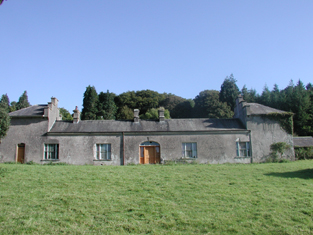
|
| Cappagh House | A house constructed in the later nineteenth century by Richard J. Ussher. In 1906 it was owned by him and valued at over £52. In 1942 the ITA survey notes it as the property of Percy Arnold Ussher. It is still extant and occupied. |
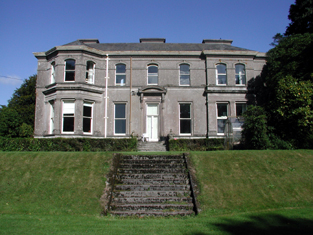
|
| Cappagh A | John Morrissy was leasing this property from the Ussher estate in 1851 when it was valued at £13. An extensive farm property still exists at the site. | |
| Carriglea House | Built by John O'Dell in the early ninetenth century, in 1851 this property was held in fee by Edward O'Dell when it was valued at £59. On the 25-inch Ordnance Survey map of the 1890s it is labelled Carriglea Convent. It is still extant and a centre for care services. |

|
| Mountodell | In 1851 this property was being leased by Rev. Edward Ellis from the Odell estate when it was valued at £9. In 1774 Charles Smith stated it was a seat of the Odell family as did Wilson in 1786. The property is still extant. | |
| Lauragh | Matthew Walsh was leasing this property from the Musgrave estate at the time of Griffith's Valuation, when it was valued at £12. | |
| Nicholastown Mill | Beresford Power was leasing this property to Walter Collander at the time of Griffith's Valuation, when it was valued at £11. The ruin of the building still remains at the site. | |
| Ballylemon Lodge | In 1906 Kathleen M. Walsh was the owner of this property, then valued at over £13. It had been built in the later nineteenth century and is shown on the 25-inch Ordnance Survey map of the 1890s. Local sources state that it was also the home of John O'Keeffe, MP for Dungarvan in the 1870s. An earlier property in the Ballylemon area was described by Smith in 1774 as "anciently the seat of Sir Richard Osborne". | |
| Little Island | This house was situated on an island in the Suir River in the southern part of Clonmel town. It was the home of the Morton family in the 19th century but is no longer extant. The Reverend James Morton held the house valued at £42 from his father Samuel at the time of Griffith's Valuation. | |
| Newcastle | Lewis writes that the only seat in the parish was the residence of S. Mulcahy. The Ordnance Survey Name Books, in 1840, mention that Newcastle House was then "in very bad repair". In the mid 19th century Miss Anne Mulcahy held the house valued at £12 from John Gordon, medical doctor, who held from the Perrys. In the 1870s William Perry is described as "of Newcastle". Elizabeth Perry occupied this house valued at £22+ in 1906. It is no longer extant. | |
| Littlebridge | In 1786, Wilson refers to Littlebridge as the seat of Andrew English. By the time of Griffith's Valuation, this area was part of the estate of Sir Richard Keane. |

